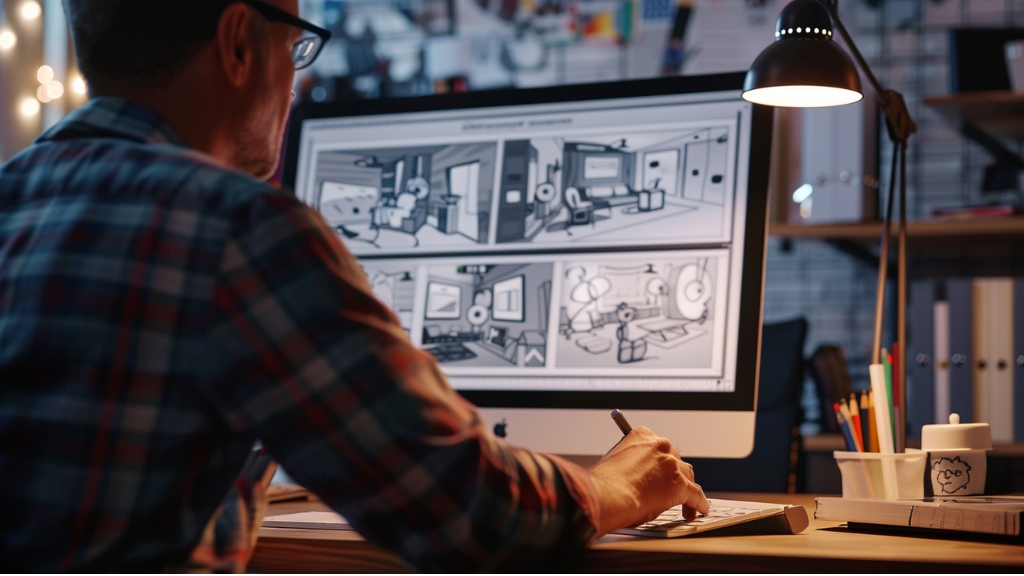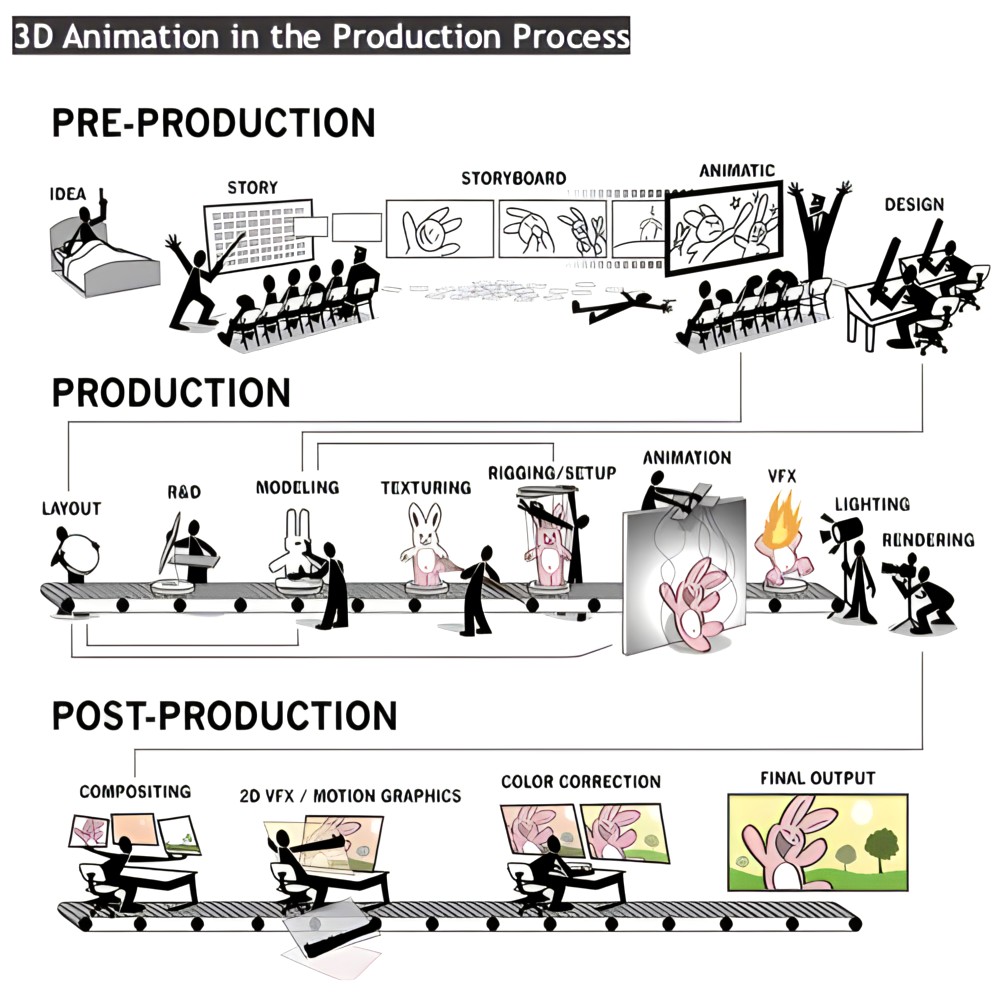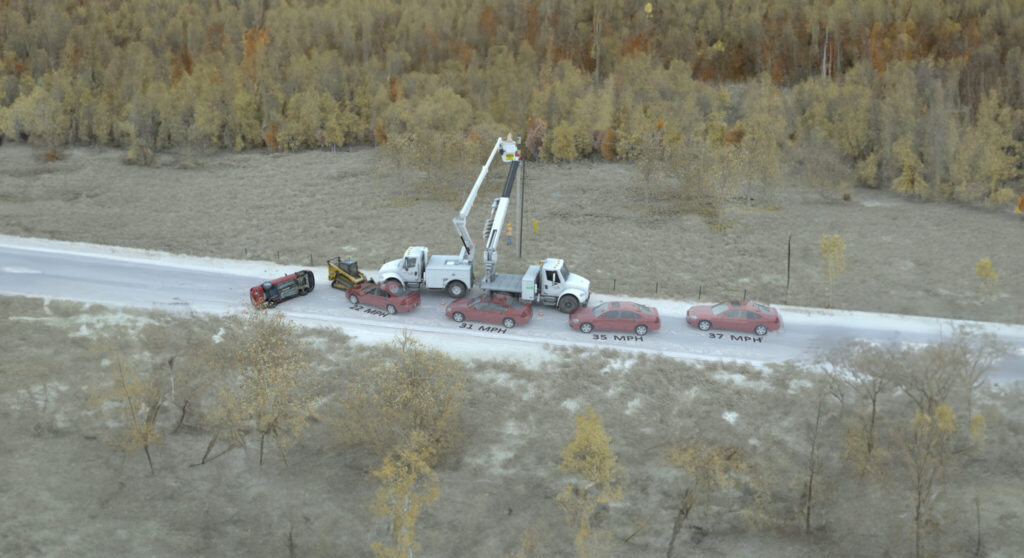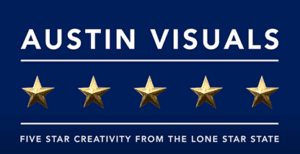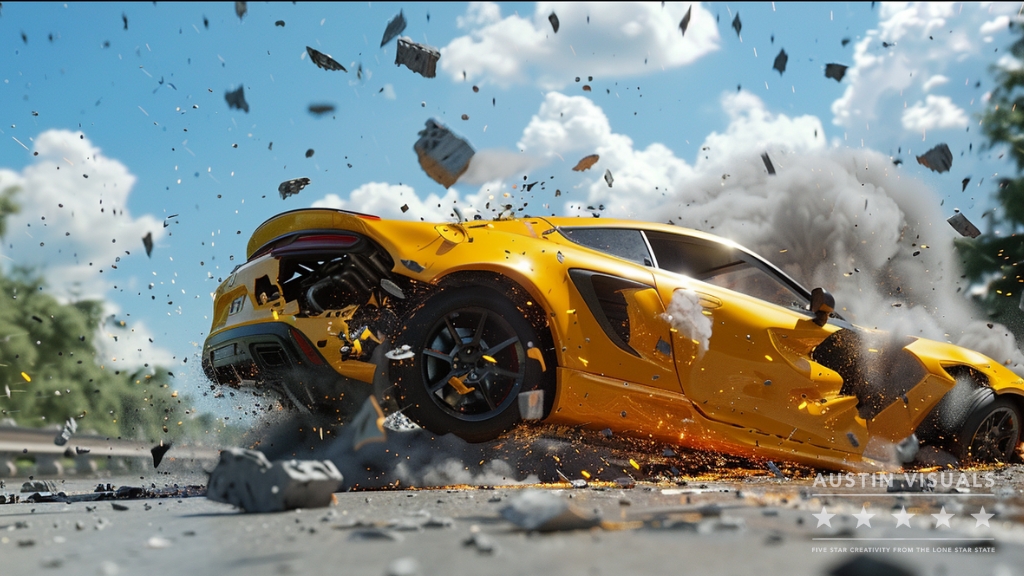
Introduction
Collision reconstruction animation is a powerful tool used to recreate and analyze vehicle accidents with remarkable accuracy and detail. These animations provide a visual representation of the events leading up to, during, and after a collision, offering valuable insights that are crucial for investigations. By transforming complex data into clear, comprehensible visuals, collision reconstruction animations help investigators, legal professionals, and juries understand the dynamics of an accident. The precision and clarity offered by these animations are essential in ensuring that every detail is accurately portrayed, making them indispensable in collision investigations.
Discover the impact of precise collision reconstruction animations with Austin Visuals 3D Animation Studio. Contact us today for a consultation and let us help you bring clarity to your investigations. Call (512) 591-8024 or email [email protected].
What is Collision Reconstruction Animation?
Definition and Overview
Collision reconstruction animation is a specialized form of forensic animation used to recreate and analyze vehicle accidents. It involves the creation of detailed, accurate 3D animations that visually depict the sequence of events leading up to, during, and after a collision. Unlike other types of animation, collision reconstruction animation relies heavily on precise data and scientific principles to ensure that the portrayal of the accident is as accurate as possible. This type of animation is used primarily in legal and investigative contexts to provide a clear and compelling visual representation of how an accident occurred.
The Science Behind Collision Reconstruction
The process of collision reconstruction is grounded in scientific principles and methodologies. It involves the collection and analysis of various forms of evidence, such as skid marks, vehicle damage, and witness statements. Experts use this data to calculate factors like vehicle speed, angles of impact, and points of collision. Advanced software and technology are then employed to create 3D models and simulate the accident based on these calculations. The resulting animation provides a detailed and scientifically accurate depiction of the collision, making it an invaluable tool for investigators and legal professionals seeking to understand the dynamics of an accident.
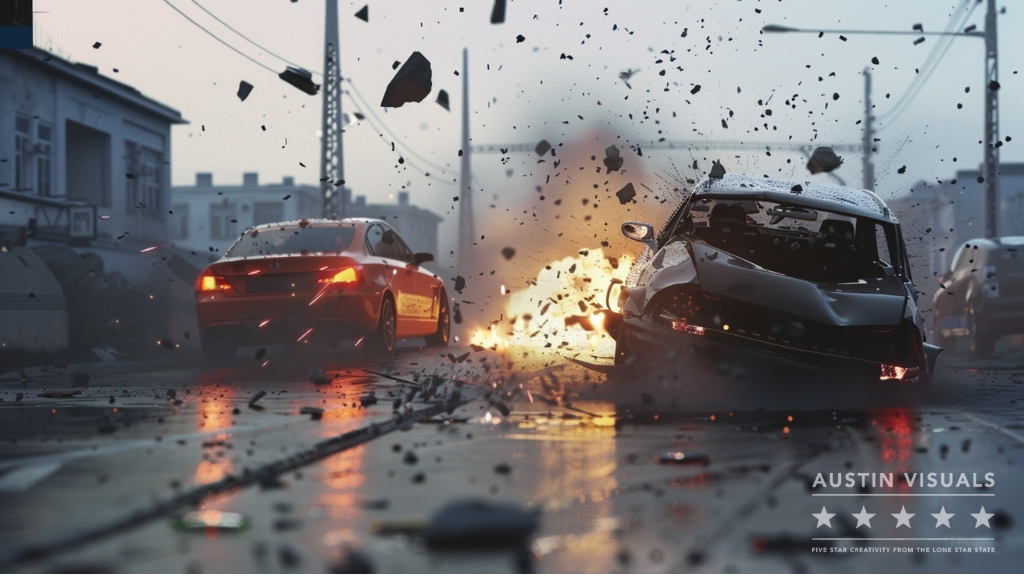
Collision Reconstruction Animation
Benefits of Collision Reconstruction Animation
1. Clarity and Precision
Collision reconstruction animation offers unparalleled clarity and precision in depicting vehicle accidents. By transforming complex data into visually engaging and accurate animations, it provides a clear understanding of the sequence of events in a collision. These animations make it easier to see the details of the impact, vehicle movements, and environmental factors, which can be crucial in analyzing the cause and effect of an accident.
2. Legal and Courtroom Advantages
In legal cases, collision reconstruction animations serve as powerful tools to support arguments and evidence. They help attorneys and experts present their findings in a compelling way that is easily understandable to judges and juries. By visually reconstructing the accident, these animations can highlight critical aspects of the case, clarify witness testimonies, and strengthen the overall presentation of the evidence.
3. Enhancing Investigations
For investigators, collision reconstruction animations are invaluable in understanding and analyzing accidents. These animations allow for a detailed examination of the events leading up to, during, and after a collision, providing insights that might be missed through traditional investigative methods. They help identify key factors such as speed, direction, and points of impact, aiding in the accurate reconstruction of the accident scenario.
4. Effective Communication
One of the major benefits of collision reconstruction animation is its ability to communicate complex scenarios to non-experts effectively. Whether it’s for legal professionals, insurance adjusters, or the general public, these animations translate technical data into a format that is easy to understand. This effective communication ensures that all stakeholders have a clear and accurate understanding of the accident, facilitating better decision-making and resolution.
The Process of Creating Collision Reconstruction Animation
Data Collection and Analysis
The creation of a collision reconstruction animation begins with thorough data collection and analysis. This involves gathering evidence from the collision scene, including photographs, videos, skid marks, vehicle damage, and witness statements. Experts analyze this data to determine key factors such as the speed of the vehicles, angles of impact, and points of collision. Accurate data collection is crucial as it forms the foundation for the entire animation process.
3D Modeling and Simulation
Once the data has been collected and analyzed, the next step is to create accurate 3D models of the vehicles and the environment. Using advanced software, animators meticulously model every detail, from the vehicles involved to the surrounding landscape and objects. These models are then used to simulate the collision, incorporating the data obtained during the analysis phase to ensure the simulation reflects the actual events accurately.
Animation and Visualization
With the 3D models and simulation in place, the collision is brought to life through detailed animation. This step involves animating the movements of the vehicles, the impact, and the aftermath of the collision. The goal is to create a visually engaging and accurate representation of the accident that clearly demonstrates how the events unfolded. High-quality animation techniques are used to enhance the realism and clarity of the visualization.
Review and Refinement
The final step in creating a collision reconstruction animation is the review and refinement process. This involves meticulously reviewing the animation to ensure it accurately represents the collision based on the collected data. Feedback is gathered from experts, legal professionals, and other stakeholders to identify any necessary adjustments. The animation is refined to address any discrepancies, ensuring it provides a precise and compelling visual representation of the collision.

